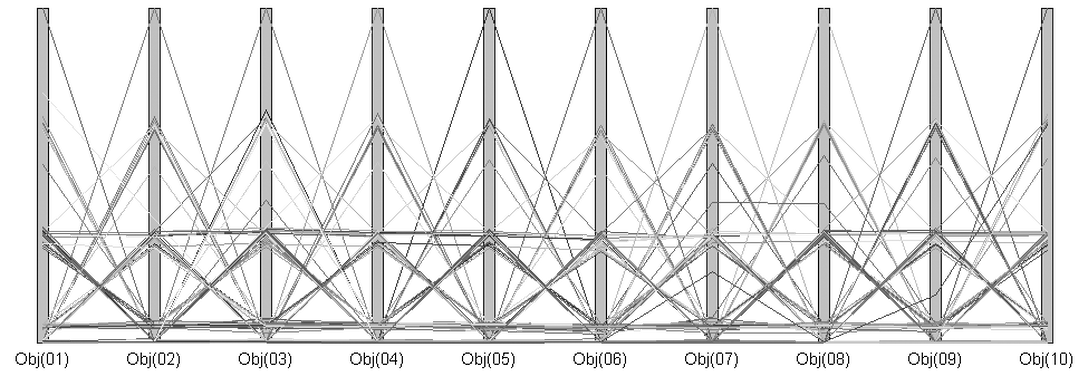Multi/Many Objectives Optimization
What if you are seeking the minimum of two conflicting objectives? Let’s say you want to buy the most luxurious car in the world, without paying much! This is a bi-objective optimization problem. You might be able to buy some used car out there with a couple of hundred dollars, but definitely it will not be a Ferrari! Obviously, such a problem does not have a single best solution. It rather has a set of solutions covering the whole luxury/cost trade-off. We call this set the “Pareto front”. Traditionally, researchers used to combine these conflicting objectives into one using several forms of scalarization functions, seeking only one solution out of the whole Pareto front. Today researchers are more interested in capturing the whole front instead of only one solution. In COIN, we focus on developing Evolutionary Multiobjective Optimization (EMO) algorithms. Our research raises the bar from tackling only two or three objectives only, to solving problems involving as many as twenty objectives, or the so called many-objective optimization. Among the most successful algorithms in the field are NSGA-II, SPEA-II, MOEA/D, Borg and NSGA-III among others.

References
Deb, K. and Jain, H. (2014). Evolutionary Many-Objective Optimization Algorithm Using Reference-point Based Non-dominated Sorting Approach, Part I: Solving Problems with Box Constraints. IEEE Transactions on Evolutionary Computation, 18(4), 577–601.
Jain, H. and Deb, K. (2014). An Evolutionary Many-Objective Optimization Algorithm Using Reference-point Based Non-dominated Sorting Approach, Part II: Handling Constraints and Extending to an Adaptive Approach. IEEE Transactions on Evolutionary Computation, 18(4), 602–622.
Seada, H. and Deb, K. (2016). A Unified Evolutionary Optimization Procedure for Single, Multiple, and Many Objectives. IEEE Transactions on Evolutionary Computation, 20(3), 358–369.
Seada, H., Abouhawwash, M. and Deb, K. (2019). Multi-Phase Balance of Diversity and Convergence in Multiobjective Optimization. IEEE Transactions on Evolutionary Computation, 23(3), 503–513.
